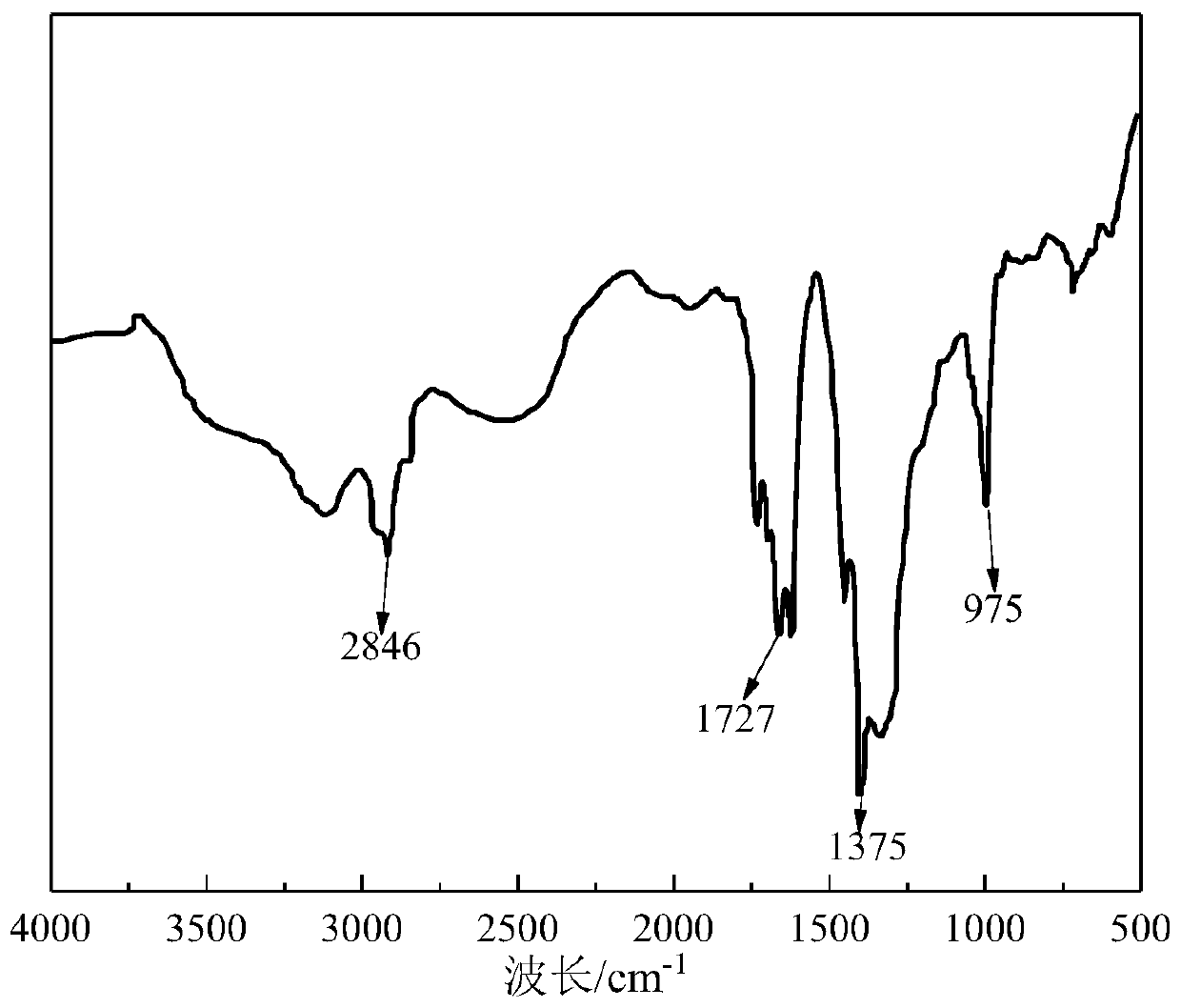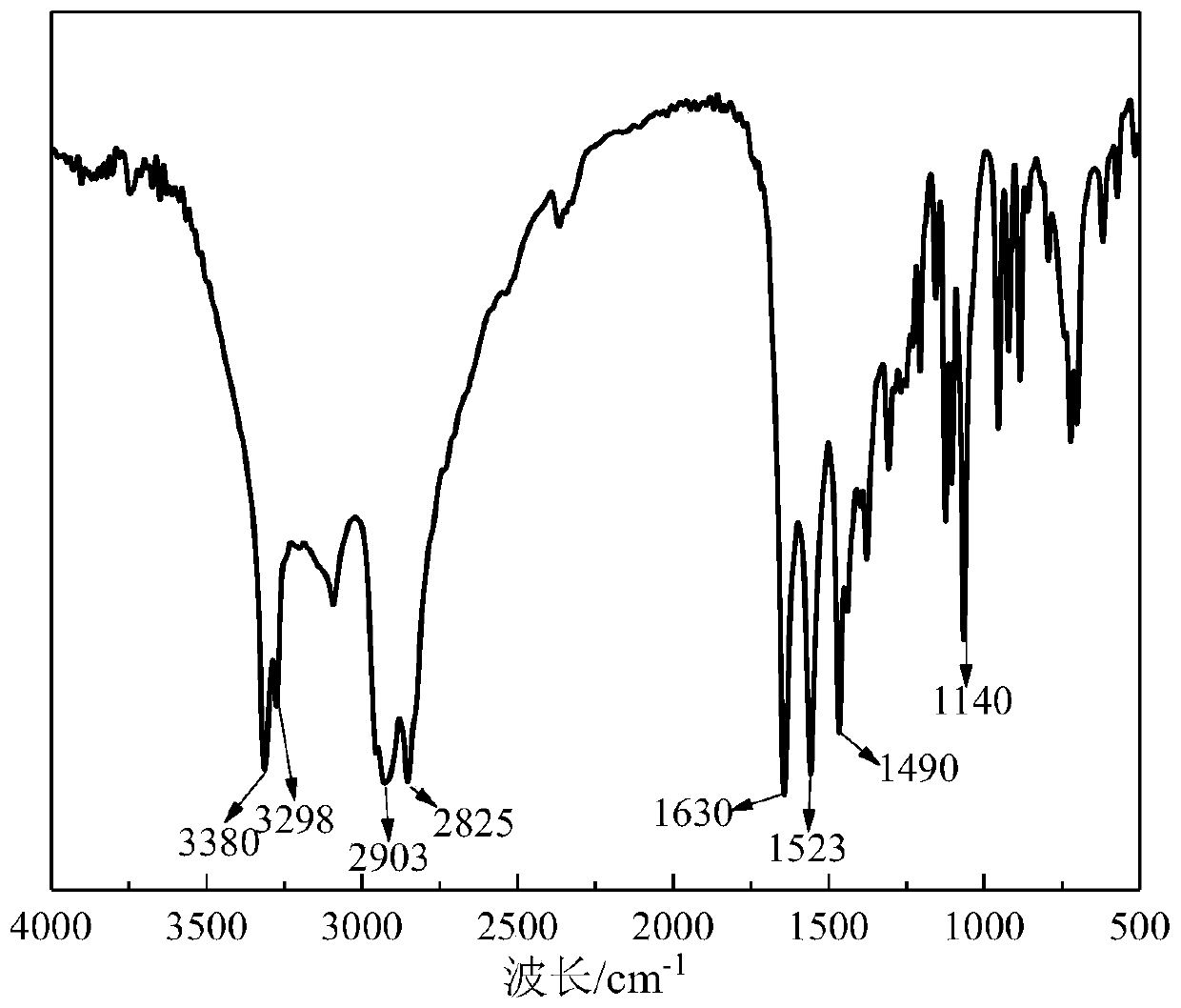Hyperbranched small molecular intercalation agent with primary amine group as the terminal group and preparation method thereof
A primary amine group, small molecule technology, applied in the field of hyperbranched small molecule intercalating agents and their preparation, can solve problems such as the difficulty of maintaining the adsorption form of intercalating agent molecules, limiting the inhibition efficiency of the intercalating agent, and the limited inhibition efficiency. , to achieve the effect of controllable molecular size and structure, inhibition of hydration expansion and dispersion migration, and low cost
- Summary
- Abstract
- Description
- Claims
- Application Information
AI Technical Summary
Problems solved by technology
Method used
Image
Examples
Embodiment 1
[0028] This example is a preparation example of the PCC reagent. It should be noted that in the field of chemistry, the PCC reagent is a complex salt solution of chromium trioxide and pyridine in hydrochloric acid.
[0029] Quickly add 100 g of chromium trioxide to 184 mL of hydrochloric acid with a concentration of 6 mol / L (which contains 1.1 mol of HCl) while stirring, and after 5 min, cool the homogeneous solution to 0°C to obtain a reddish-brown liquid, which is removed by filtration under normal pressure. Insolubles. Afterwards, within 10 minutes, 79.1 g of pyridine was added to the homogeneous solution. With the addition of pyridine, a yellow solid gradually precipitated. After the pyridine was added dropwise, it was cooled to 0°C again to obtain an orange solid, which was collected by filtration with a sand core funnel. Yellow solid product. The product was dried in a vacuum desiccator for 1 hour, and then dried in a desiccator filled with phosphorus pentoxide for 48 h...
Embodiment 2
[0033] This example is a preparation example of 1,1,1-triformaldehyde propane.
[0034] dichloromethane (DCM) over anhydrous CaCl 2 After drying, re-evaporate, and then dissolve the PCC reagent in the DCM after re-distillation to remove water and stir. After the PCC reagent is completely dissolved, pour it into a 500mL three-necked flask. Add the DCM solution of 1,1,1-trimethylolpropane dropwise to the three-necked flask under stirring at room temperature to ensure that the molar ratio of the hydroxyl group of 1,1,1-trimethylolpropane to the PCC reagent is 1:1.5 , After the dropwise addition, the reaction was continued for 4h and then the reaction was stopped. Pour out the upper layer solution, the lower layer of solid matter was washed 3 times with DCM, the upper layer solution and the washing liquid were combined, and the combined solution was successively washed with saturated NaHCO 3 Washed with aqueous solution, followed by anhydrous Na 2 SO 4 After drying and filteri...
Embodiment 3
[0040] This example is a preparation example of 1,1,1-triaminomethylpropane.
[0041] Weigh ammonium formate and formic acid according to the molar ratio of 1:2, stir well and pour into excess toluene, stir again and pour into a three-necked flask with a condensing reflux tube. After the temperature was raised to 80° C. under the condition of an oil bath, a toluene solution of 1,1,1-triformylpropane was added dropwise into the three-necked flask. After the dropwise addition, the temperature of the reaction solution system was slowly raised to 160°C, the reaction was continued for 6 hours, and then the reaction was stopped to obtain a black tar-like liquid, which was filtered under reduced pressure to remove the black coke impurities, and the obtained filtrate was successively washed with saturated NaHCO 3 Wash with saturated NaCl aqueous solution, and the liquid after layering is separated with a separatory funnel, and washed with anhydrous NaCl 2 SO 4The upper mother liquor...
PUM
 Login to View More
Login to View More Abstract
Description
Claims
Application Information
 Login to View More
Login to View More - R&D
- Intellectual Property
- Life Sciences
- Materials
- Tech Scout
- Unparalleled Data Quality
- Higher Quality Content
- 60% Fewer Hallucinations
Browse by: Latest US Patents, China's latest patents, Technical Efficacy Thesaurus, Application Domain, Technology Topic, Popular Technical Reports.
© 2025 PatSnap. All rights reserved.Legal|Privacy policy|Modern Slavery Act Transparency Statement|Sitemap|About US| Contact US: help@patsnap.com



